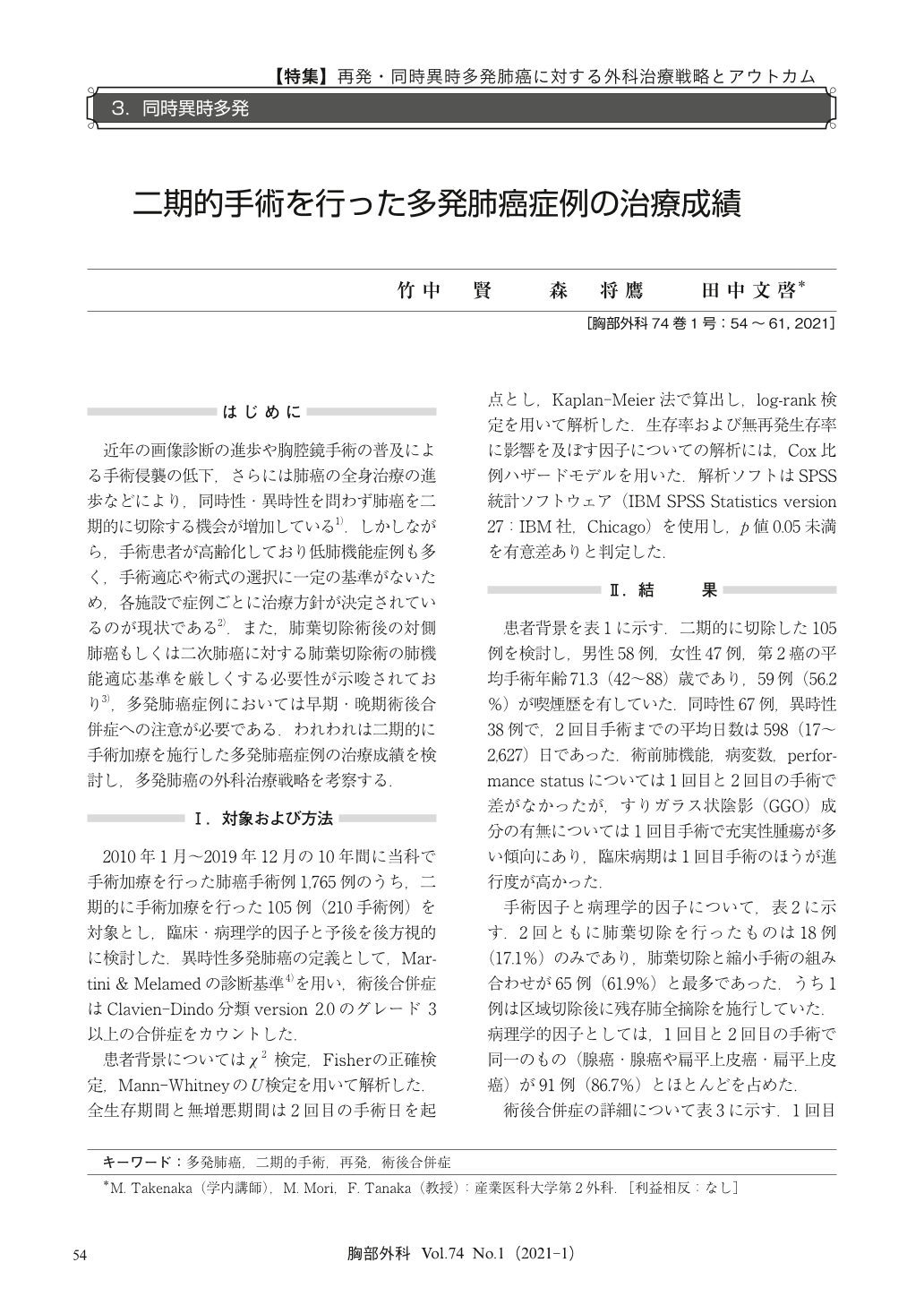Japanese
English
- 有料閲覧
- Abstract 文献概要
- 1ページ目 Look Inside
- 参考文献 Reference
近年の画像診断の進歩や胸腔鏡手術の普及による手術侵襲の低下,さらには肺癌の全身治療の進歩などにより,同時性・異時性を問わず肺癌を二期的に切除する機会が増加している1).しかしながら,手術患者が高齢化しており低肺機能症例も多く,手術適応や術式の選択に一定の基準がないため,各施設で症例ごとに治療方針が決定されているのが現状である2).また,肺葉切除術後の対側肺癌もしくは二次肺癌に対する肺葉切除術の肺機能適応基準を厳しくする必要性が示唆されており3),多発肺癌症例においては早期・晩期術後合併症への注意が必要である.われわれは二期的に手術加療を施行した多発肺癌症例の治療成績を検討し,多発肺癌の外科治療戦略を考察する.
Backgrounds:There is an increasing number of cases of two-stage surgery for synchronous or metachronous lung cancer. We discuss the surgical treatment strategy for multiple lung cancers.
Methods:We retrospectively reviewed the clinicopathological factors and prognosis of 105 patients (210 surgeries) who underwent two-stage surgery for lung cancer during the period from 2010 to 2019 in our department.
Results:A total of 105 cases were reviewed;58 males and 47 females, 67 were synchronous and 38 were metachronous. Long-term prognosis of death from other diseases due to respiratory diseases was found in eight patients (7.6%). Recurrence of lung cancer was observed in 29 (27.6%), and cancer death was found in 9 of them. The overall three-year and five-year survival rates were 85.3% and 71.3%, respectively. The absence of ground-glass opacity components in the tumor (p=0.036) and advanced pathological stage (p=0.048) were significantly associated with postoperative recurrence.
Conclusions:The recurrence rate was high in cases of solid tumors and advanced pathological stage, even in multiple lung cancers. Thus, an appropriate combination of limited surgery and standard surgery should be used, taking into account the nature of the tumor and the patient’s ability to tolerate the surgery.

© Nankodo Co., Ltd., 2021


